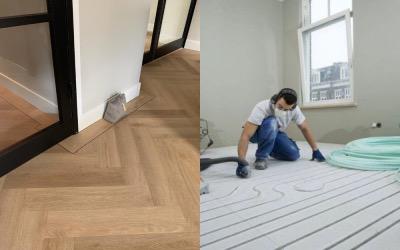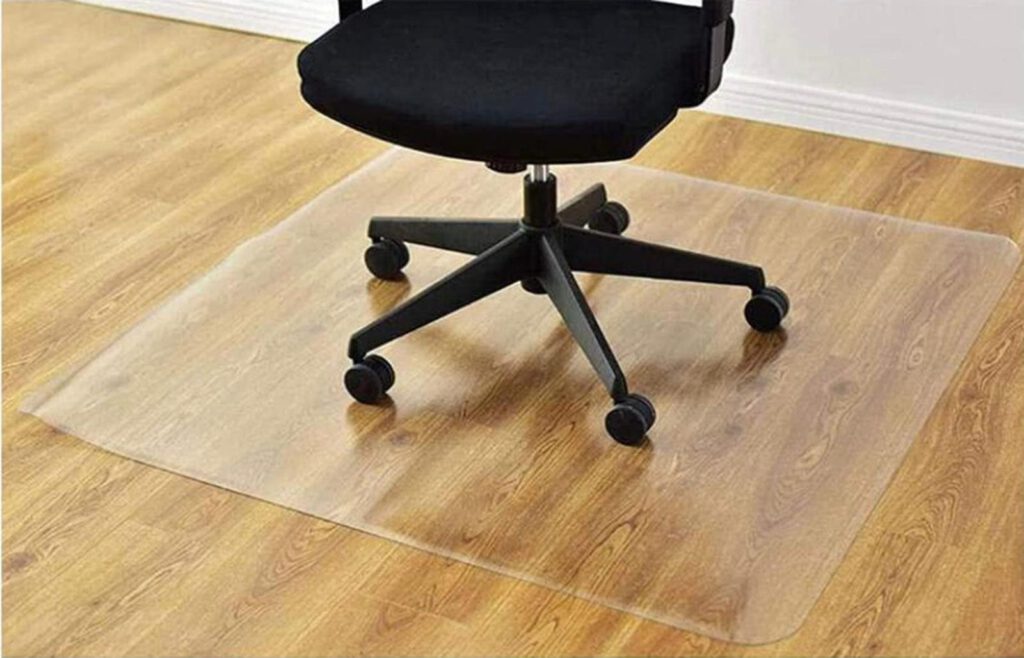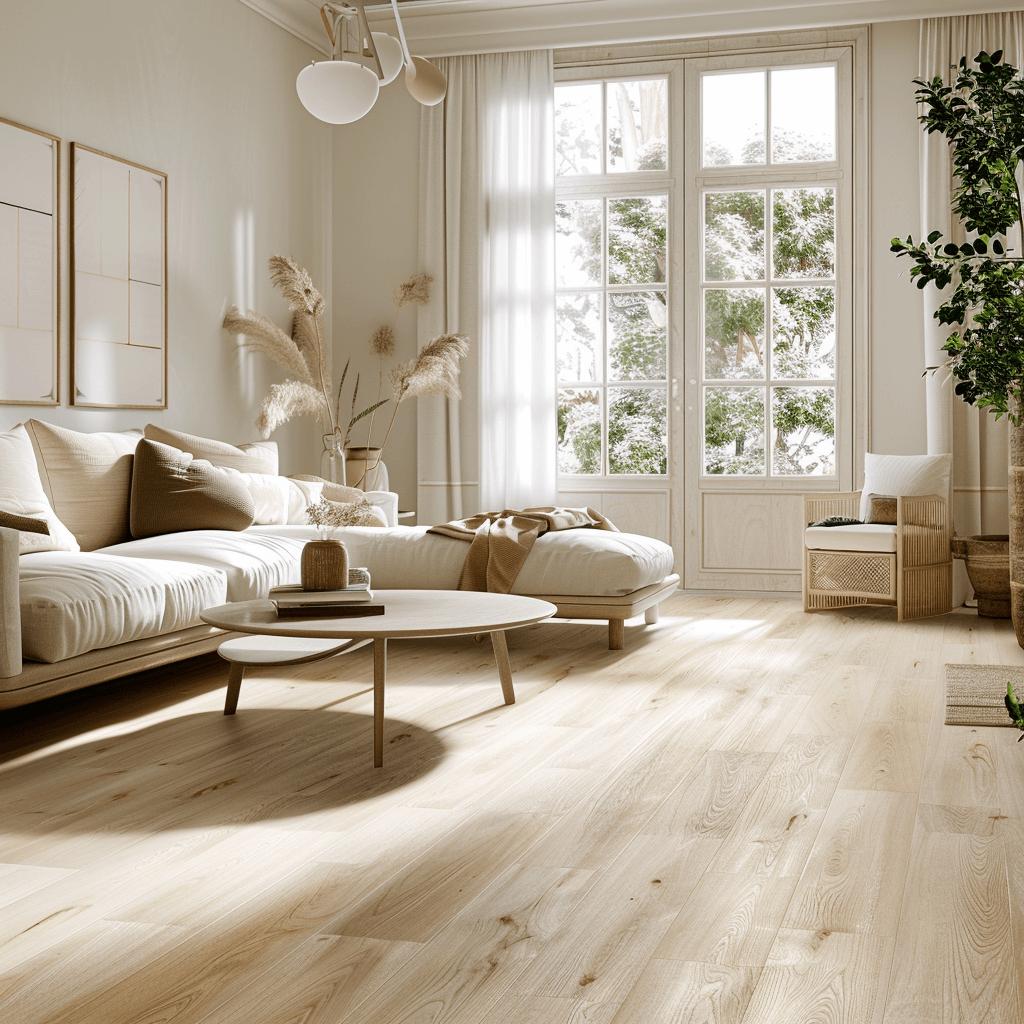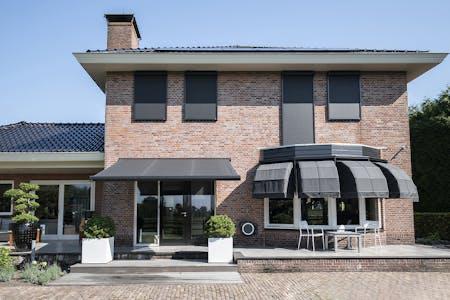Are you considering installing a new PVC floor? Then you probably have questions about it. After all, you don’t choose a new floor for your home every day. A new floor is not cheap, so it is good to orientate yourself in advance.
As flooring specialists, we often get questions about PVC floors. In this article you can read the answers to frequently asked questions about PVC floors.
We hope to answer all your questions and that you will learn something new about PVC floors.
Frequently asked questions about PVC floors
Below you will find answers to all frequently asked questions about PVC floors. If your question is not listed, or if you would like additional information, please contact us.
Is a PVC floor suitable for all rooms?
A PVC floor can be laid in all rooms of a home. This floor is resistant to water and can therefore also be laid in the shower, toilet or kitchen.
To make the floor 100% waterproof, the seams can be sealed and the edges can be sealed.
How long does a PVC floor last?
The lifespan of a high-quality PVC floor can be up to 30 years. It is important that the floor is maintained properly, otherwise the floor will not last as long.
How thick is a PVC floor?
The thickness of PVC depends on the brand and type of floor. Wall-to-wall self-adhesive PVC is often 2 to 3 mm thick. Click PVC strips are often slightly thicker, namely 5 to 7 mm.
Is a PVC floor suitable for underfloor heating?
Yes, a PVC floor is suitable for underfloor heating. The floor can be laid over both electric underfloor heating and water-based underfloor heating (with a maximum temperature of 27 °C). An underlay is usually not necessary.

What is better: click or glue PVC?
The answer to this question depends on the quality of the subfloor. The biggest difference between glue and click PVC is the way of installation.
Strips of glue PVC are glued to the substrate. With glue PVC, it is therefore important that the substrate is smooth and even, for a good result.
Click PVC is laid floating, whereby the substrate is levelled with an underlay. You can also lay this floor if the subfloor is less smooth.
Can PVC be laid over an existing floor?
Sometimes this is possible, but it depends on the current floor covering.
If there is currently carpet, laminate or vinyl, the existing floor must be removed. The surface can then be levelled.
A tiled floor can remain in place. The floor must then be levelled so that the joints are no longer visible.

What do you need to do before you can lay a PVC floor?
That depends on the type of PVC you want to have laid. Glued PVC can only be laid on a clean, even and flat surface. The surface may first need to be levelled after the old floor has been removed.
In the case of click PVC, you can prepare the surface with an underlay that provides insulation and levelling. You can then lay the PVC strips or tiles over this.
Does PVC need to acclimatise? If so, for how long?
Yes. New PVC needs to be at the right temperature before it is laid, to prevent the floor from expanding or shrinking after laying. Lay a new PVC floor in the room where it will be laid for 48 hours, with the packaging open.
What is the right room temperature during laying?
When laying a PVC floor, we recommend an ambient temperature of at least 18 °C. The PVC that you are going to lay must therefore also have at least that temperature. The ideal temperature for the subfloor is at least 15 °C, with a relative humidity of maximum 70%.
How much cutting loss should you normally calculate?
Calculate 5% cutting loss for PVC strips
Calculate 10% cutting loss for PVC tiles
Calculate 15% cutting loss for a herringbone pattern
How long should you not walk on a PVC floor?
A glued PVC floor must be rolled. As soon as the floor has been rolled, you can walk on it.
In the case of click PVC, you can walk on it immediately after laying the floor.
Can a PVC floor shrink?
That rarely happens. In some cases, PVC can expand or shrink slightly due to prolonged heat, cold or humid air. This may be a maximum of 1%.
Therefore, when laying click PVC, make sure that you leave a space of 4 to 5 mm between the strips and the wall.
Can a PVC floor be removed or replaced later?
Yes. Floating PVC can be easily removed by yourself. This can be useful if the floor is damaged and you want to repair it.
Glued PVC is more difficult to remove, especially if there is also underfloor heating underneath. So it is better to leave this to a flooring specialist. Certo can do this for you if desired.
When to put furniture on a PVC floor?
You can place furniture immediately after laying the PVC floor. This applies to both click and adhesive PVC. Please note that adhesive PVC must be rolled to ensure that the floor adheres properly to the substrate.
Do you need to make adjustments to the furniture for a PVC floor?
Sliding furniture can cause ugly scratches in your new floor. To extend the life of your PVC floor, it is best to apply anti-scratch felt under the legs of the furniture. You can easily stick this under the chair legs and under the cabinets.
You can also use chair leg protectors, but make sure that they are specifically designed for PVC floors. Rubber can leave black stripes on the floor and these are not easy to remove. Prevention is therefore better.
Are you planning to use an office chair with castor wheels on the floor? Then protect the floor with a special plastic mat and use special, non-scratch castor wheels under the chair.

How do you maintain a PVC floor?
To maintain a PVC floor, use doormats at the front and back door and protect your furniture. You can also take off your shoes at the door and vacuum regularly with a parquet brush. Sand causes scratches on the floor.
Superficial scratches can be removed quite easily, but deeper scratches are better removed later by a flooring specialist.
Want to know more?
Is one of your frequently asked questions about PVC floors not listed? Or would you like to know more about PVC floors? Please feel free to contact us. We will be happy to tell you all about this popular floor.



